Marriage is what one man and one woman establish when, forsaking all others and pledging lifelong commitment, they found a sharing of life at every level of being—the biological, the emotional, the dispositional, the rational, the spiritual—on a commitment that is sealed, completed and actualized by loving sexual intercourse in which the spouses become one flesh, not in some merely metaphorical sense, but by fulfilling together the behavioral conditions of procreation.
No one has a civil right to have a non-marital relationship treated as a marriage. Marriage is an objective reality—a covenantal union of husband and wife—that it is the duty of the law to recognize and support for the sake of justice and the common good. If it fails to do so, genuine social harms follow.
—The Manhattan Declaration, released in 2009—
Key point: The Supreme Court ruling that changed the definition of marriage in the United States to include same-sex couples is based on numerous myths, including myths that have misinformed and misled people in the United States about the role of government, the nature of rights in relation to government, and government’s responsibility to respect the sacredness of marriage.
Go here for summaries of all the articles in this series.
A condensed version of this article is available here.
Now known as the “father of infection control,” Ignaz Semmelweis (1818-1865) wasn’t always well-respected. A native of Hungary, he earned his medical degree in 1844, and in 1847, through an appointment, became an assistant professor at a highly regarded teaching hospital in Vienna. His area of expertise was obstetrics, and he soon became alarmed about the mortality rate at his hospital among the women whose babies were delivered by doctors and medical students. It was between 13 and 18 percent! By contrast, the mortality rate was just 2 percent among the women whose babies were delivered with assistance from midwives or those learning to become midwives.
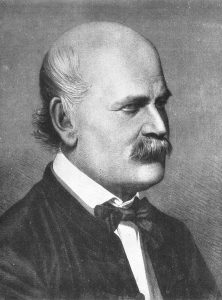
Noticing that it wasn’t unusual for medical personnel to perform autopsies before delivering babies, Dr. Semmelweis began requiring all doctors and students to wash their hands before assisting the hospital’s patients. The mortality rate plummeted to 2 percent—as low as the rate for the women assisted by the midwives. As wonderful as this was, Dr. Semmelweis wasn’t through. Now, medical instruments would be washed as well. After this requirement took effect, the death rate dropped down to just 1 percent.
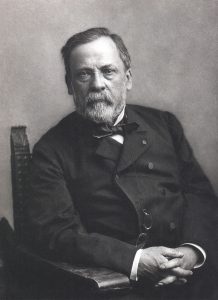
The good doctor, though his policies, had saved a significant number of lives. With our modern understanding of infectious diseases, we readily can see this; but at the time, sadly, Semmelweis’s supervisor did not. A new ventilation system had been installed in the hospital, and he believed it was responsible for the improved statistics. Apparently, Semmelweis could not convince him otherwise.

Unfortunately, Semmelweis’s appointment to teach and work at the hospital was a 2-year appointment that wasn’t renewed. To his credit, the doctor continued to make his case for handwashing among medical personnel. In 1861, he even wrote a book about it. Dr. Semmelweis was right, but his book was not well written and was met with skepticism. Only a few years later as a patient in a public insane asylum, Dr. Semmelweis died. He was only 47 years old.

We all can be glad the story doesn’t end there. Louis Pasteur (1822-1895) entered the picture not many years later. While Semmelweis’s policies had produced positive results, the good doctor couldn’t articulate the reasons why. Pasteur was able to do this by explaining the germ theory of infectious diseases. Relying on Pasteur’s investigations, Joseph Lister, a British physician who lived from 1827-1912, was able to convince his medical colleagues to adopt effective sanitation procedures. Florence Nightingale (1820-1910), the medical pioneer credited with founding modern nursing, also promoted sanitation guidelines in the medical profession.1
Myths and the Dangers They Pose
It took some time, but Ignaz Semmelweis was vindicated. Many lessons arise from his story—not the least of which is that failure to believe and act upon the truth can be quite costly. While we’ve cited from his story just one false belief in a single situation, false ideas sometimes grip entire cultures. When they do, they can be extremely dangerous and hazardous. Moreover, the more ingrained an erroneous belief is in people’s minds, and the more widespread it is, the greater its potential to harm and destroy. We often call an erroneous belief that has widespread acceptance a myth.
The more ingrained an erroneous belief is in people’s minds, and the more widespread it is, the greater its potential to harm and destroy. Such beliefs often are called myths.
In this and subsequent posts, I’d like to examine at least 16 myths that paved the way for the Supreme Court to redefine marriage two and a half years ago in Obergefell v. Hodges. In the United States we did not arrive overnight, but over time, at a place where judicial decree could redefine marriage. Even so, this process has taken place at amazing speed. Only a scant few decades ago, the idea of same-sex marriage was totally unthinkable. Since then, the culture’s prevailing underlying assumptions about marriage were challenged, attacked and ridiculed, and then pushed aside—both forcibly in the courts and subtly in the culture.
Over time, the culture’s prevailing underlying assumptions about marriage were challenged, attacked and ridiculed, and then pushed aside—both forcibly in the courts and subtly in the culture.
In this article, we will examine 4 myths about government, law, and the US Constitution. In subsequent posts we’ll examine the remaining myths on our list, these having to do with the nature of marriage itself. We will see how these myths, both individually and especially through Obergefell, actually are a threat to the well-being of individuals, society, and individual liberties. Proponents of same-sex marriage are not exempt from these threats. Those who worked hard to promote the redefinition of marriage are not as free as they think they are. Falsehoods enslave, but the truth liberates!
Here goes.
Myth #1: Marriage is a government construct over which government and government alone has oversight.
Fact: Marriage—the lifelong union of one man and one woman—is not at all a government construct, but an institution that preceded government, and an institution that preceded the United States government by thousands of years. Moreover, marriage and the family is society’s most important and most basic institution. Despite any and all appearances and sentiments to the contrary, without healthy marriages and healthy families, societal stability cannot be maintained.
This is not to say that government ought to have nothing to say about marriage. It is to say that government should respect marriage for what it is rather than seeking to manipulate it to meet the demands of a select few.

In the Manhattan Declaration (2009), the section on marriage first cites two Bible passages—Genesis 2:23-24 and Ephesians 5:32-33. Then, the initial paragraph on marriage begins with these three sentences.
[1] In Scripture, the creation of man and woman, and their one-flesh union as husband and wife, is the crowning achievement of God’s creation. [2] In the transmission of life and the nurturing of children, men and women joined as spouses are given the great honor of being partners with God Himself. [3] Marriage then, is the first institution of human society—indeed it is the institution on which all other human institutions have their foundation.
Marriage…is the first institution of human society—indeed it is the institution on which all other human institutions have their foundation.
—The Manhattan Declaration—
Clearly from the context, the word first in the term “first institution” means both first in time and first in importance.
Similarly, the Pledge in Solidarity to Defend Marriage states,
On the matter of marriage, we stand in solidarity. We affirm that marriage and family have been inscribed by the Divine Architect into the order of Creation.
Marriage is ontologically between one man and one woman, ordered toward the union of the spouses, open to children and formative of family. Family is the first vital cell of society, the first government, and the first mediating institution of our social order. The future of a free and healthy society passes through marriage and the family.
Marriage as existing solely between one man and one woman precedes civil government.
In the spring of 2015, Dr. James Dobson wrote the following in a letter to supporters of his ministry, Family Talk.
 The institution of the family is one of the Creator’s most marvelous and enduring gifts to humankind. It was revealed to Adam and Eve in the Garden of Eden and then described succinctly in Genesis 2:24, where we read, “For this cause, a man shall leave his father and mother and cleave to his wife, and they shall be one flesh.” With those 20 [-plus] words, God announced the ordination of male-female marriage, long before He established the two other great human institutions, the church and
the government.
The institution of the family is one of the Creator’s most marvelous and enduring gifts to humankind. It was revealed to Adam and Eve in the Garden of Eden and then described succinctly in Genesis 2:24, where we read, “For this cause, a man shall leave his father and mother and cleave to his wife, and they shall be one flesh.” With those 20 [-plus] words, God announced the ordination of male-female marriage, long before He established the two other great human institutions, the church and
the government.
At least 5,000 years have come and gone since that point of origin, yet every civilization in the history of the world has been built upon it. Despite today’s skeptics who claim that marriage is an outmoded and narrow-minded Christian concoction, the desire of men and women to “leave” and “cleave” has survived and thrived through times of prosperity, famine, wars, peace, epidemics, tyranny, and every other circumstance and human condition. It has been the bedrock of culture in Asia, Africa, Europe, North America, South America, Australia and even Antarctica. [Note that this has been true even in countries that aren’t predominantly Christian.]…
Admittedly, there have been various societies in history where homosexuality has flourished, including the biblical cities of Sodom and Gomorrah, in ancient Greece and in the Roman Empire. None of these civilizations survived. Furthermore, even where sexual perversion was tolerated or flourished, the institution of marriage continued to be honored in law and custom. Only in the last few years has what is called “gay marriage” been given equal status with biblical male-female unions.…God help us if we throw the divine plan for humankind on the ash heap of history.
 In the months prior to the Supreme Court ruling of June 26, 2015, that redefined marriage nationwide, the dominoes were falling in states where the people had amended their state constitutions to say unambiguously that marriage was between one man and one woman. Judges—especially members of the federal judiciary—were overruling the people almost en masse. Observing this judicial tyranny, Dennis Prager lamented,
In the months prior to the Supreme Court ruling of June 26, 2015, that redefined marriage nationwide, the dominoes were falling in states where the people had amended their state constitutions to say unambiguously that marriage was between one man and one woman. Judges—especially members of the federal judiciary—were overruling the people almost en masse. Observing this judicial tyranny, Dennis Prager lamented,
Society is no longer being permitted to define marriage in the only way marriage has ever been defined in the annals of recorded history. Many societies have allowed polygamy, many have allowed child marriages, some have allowed marriage within families; but none in thousands of years has defined marriage as the union of people of the same sex.
None of this matters to these judges or to all those who seek to redefine marriage and can’t convince a majority of their fellow citizens to agree.
Many societies have allowed polygamy, many have allowed child marriages, some have allowed marriage within families; but none in thousands of years has defined marriage as the union of people of the same sex.
—Dennis Prager—
Given what marriage is, and what it has been for millennia, and the good that results when it is respected and honored, it is fitting that the Pledge in Solidarity to Defend Marriage would say forthrightly to the Supreme Court of the United States,
Our highest respect for the rule of law requires that we not respect an unjust law that directly conflicts with higher law. A decision purporting to redefine marriage flies in the face of the Constitution and is contrary to the natural created order. As people of faith we pledge obedience to our Creator when the State directly conflicts with higher law. We respectfully warn the Supreme Court not to cross this line.
Myth #2: The federal government, especially through its court system, has absolute authority over marriage.
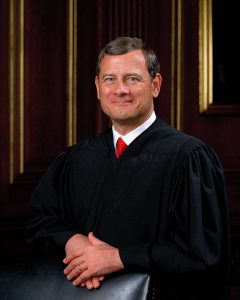
Fact: This myth is completely unconstitutional. Courts do not have authority to make laws. Moreover, the Tenth Amendment of the US Constitution states, “The powers not delegated to the United States by the Constitution, nor prohibited by it to the states, are reserved to the states respectively, or to the people.” The Constitution is silent about the matter of marriage, and that alone places marriage out of the reach of the federal judiciary, including the Supreme Court.
In his dissenting opinion in Obergefell, Chief Justice John Roberts wrote,
[T]his Court is not a legislature. Whether same-sex marriage is a good idea should be of no concern to us. Under the Constitution, judges have power to say what the law is, not what it should be. The people who ratified the Constitution authorized courts to exercise “neither force nor will but merely judgment.” The Federalist No. 78, p. 465.
Justice Scalia, dissenting, wrote,
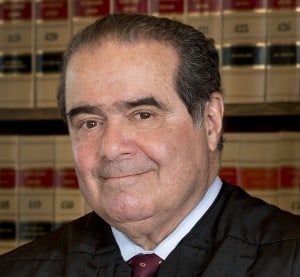
Today’s decree says that my Ruler, and the Ruler of 320 million Americans coast-to-coast, is a majority of the nine lawyers on the Supreme Court. The opinion in these cases is the furthest extension in fact— and the furthest extension one can even imagine—of the Court’s claimed power to create “liberties” that the Constitution and its Amendments neglect to mention. This practice of constitutional revision by an unelected committee of nine, always accompanied (as it is today) by extravagant praise of liberty, robs the People of the most important liberty they asserted in the Declaration of Independence and won in the Revolution of 1776: the freedom to govern themselves.
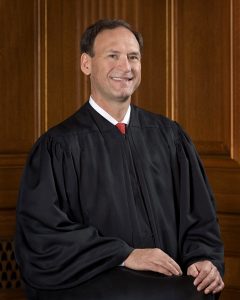
Justice Alito, dissenting, wrote,
Today’s decision shows that decades of attempts to restrain this Court’s abuse of its authority have failed. A lesson that some will take from today’s decision is that preaching about the proper method of interpreting the Constitution or the virtues of judicial self-restraint and humility cannot compete with the temptation to achieve what is viewed as a noble end by any practicable means.
Note: Even now, in 2022 (nearly five years after this article first appeared and a full seven years after the Supreme Court handed down its ruling in Obergefell), leftists’ efforts to write same-sex marriage into federal law through the legislative process demonstrate just how unconstitutional same-sex marriage is. Courts, as we have said, do not have the authority to make laws. So if Congress makes a law authorizing same-sex marriage, then it essentially is admitting the Supreme Court’s ruling was illegitimate to begin with.
Further, the US Constitution does not mention marriage, and the Ninth and Tenth Amendments state, respectively,
-
-
- Amendment IX: The enumeration in the Constitution, of certain rights, shall not be construed to deny or disparage others retained by the people.
- Amendment X: The powers not delegated to the United States by the Constitution, nor prohibited by it to the states, are reserved to the states respectively, or to the people.
-

While I am not an attorney, these realities, it appears to me, indicate clearly the federal government has no constitutional authority to dictate that so-called same-sex “marriage” (marriage redefined) must be recognized by every state in the union.
Myth #3: The government bestows rights; therefore, the government can take them away.
Fact: The Declaration of Independence is correct when it affirms the self-evident truths
that all men are created equal, that they are endowed by their Creator with certain unalienable Rights, that among these are Life, Liberty and the pursuit of Happiness. — That to secure these rights, Governments are instituted among Men, deriving their just powers from the consent of the governed….
The government never will admit to taking away rights—only to granting them. Yet, in the very act of creating rights outside its authority, it tramples on the inherent, God-given rights of others.
This isn’t all. In state after state, unable to convince the people to change the definition of marriage to include same-sex couples, advocates of same-sex marriage went to the courts to get the judiciary to reshape and change marriage. They demanded that the courts make of marriage something it is not, and in doing so, they relied on government to create rights it has no authority to create.
In his dissent, Justice Clarence Thomas was especially articulate in highlighting this myth and warning of its dangers. Thomas, dissenting in Obergefell, wrote,

The Court’s decision today is at odds not only with the Constitution, but with the principles upon which our Nation was built. Since well before 1787, liberty has been understood as freedom from government action, not entitlement to government benefits. The Framers created our Constitution to preserve that understanding of liberty. Yet the majority invokes our Constitution in the name of a “liberty” that the Framers would not have recognized, to the detriment of the liberty they sought to protect. Along the way, it rejects the idea—captured in our Declaration of Independence—that human dignity is innate and suggests instead that it comes from the Government. This distortion of our Constitution not only ignores the text, it inverts the relationship between the individual and the state in our Republic. I cannot agree with it.
Thomas went on to demonstrate just how far out of bounds the Court went when it changed the definition of marriage to grant “rights” to same-sex couples. He also emphasized the threats to religious liberty and rights of conscience the court’s overreach created. Please read more from Justice Thomas’s brilliant and articulate dissent here.
Go here to read about the differences between the Founders’ view on rights and the contemporary American view. Unfortunately, we have exchanged the Founders perspective on rights—a view of rights that fosters genuine liberty—for one that eventually will give way to tyranny. All the while, this has been done under the mantra of freedom and rights!
Unfortunately, we have exchanged the Founders perspective on rights—a view of rights that fosters genuine liberty—for one that eventually will give way to tyranny.
Myth #4: The Supreme Court is the final arbiter of disputes in the United States.
Fact: The Founders of our country never intended that the Supreme Court of the United States would acquire the power it now has. Often, we hear that the Framers established “equal” or “co-equal” branches of government—executive, legislative, and judicial. Even if it were true the Founding Fathers intended for them to be equal, our government has departed from this principle. The courts have stepped way beyond their constitutional authority.
In the Federalist Papers—initially anonymous articles published by a New York newspaper that encouraged New York to ratify the proposed US Constitution—Alexander Hamilton wrote,

It proves incontestably, that the judiciary is beyond comparison the weakest of the three departments of power; that it can never attack with success either of the other two; and that all possible care is requisite to enable it to defend itself against their attacks. It equally proves, that though individual oppression may now and then proceed from the courts of justice, the general liberty of the people can never be endangered from that quarter; I mean so long as the judiciary remains truly distinct from both the Legislature and the Executive. [Federalist Paper #78].
James Madison said this: “In republican government, the legislative authority necessarily predominates” [Federalist Paper #51].
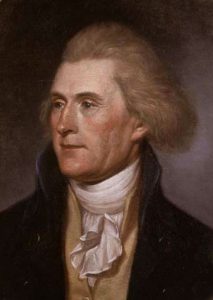
Another Founding Father, Thomas Jefferson, became alarmed about the growth of judicial power he himself was witnessing, and he openly expressed his concerns. Each of the following is a quote from the third US President.
- We already see the [judiciary] power, installed for life, responsible to no authority…advancing with a noiseless and steady pace to the great object of consolidation. The foundations are already deeply laid by their decisions for the annihilation of constitutional State rights and the removal of every check, every counterpoise to the engulfing power of which themselves are to make a sovereign part.
- [T]he opinion which gives to the judges the right to decide what laws are constitutional and what not, not only for themselves in their own sphere of action but for the Legislature and Executive also in their spheres, would make the Judiciary a despotic branch.
- To consider the judges as the ultimate arbiters of all constitutional questions; a very dangerous doctrine indeed, and one which would place us under the despotism of an oligarchy.…[T]heir power [is] the more dangerous as they are in office for life and not responsible, as the other functionaries are, to the elective control. The Constitution has erected no such single tribunal, knowing that to whatever hands confided…its members would become despots. It has more wisely made all the departments co-equal and co-sovereign within themselves.…When the legislative or executive functionaries act unconstitutionally, they are responsible to the people in their elective capacity. The exemption of the judges from that is quite dangerous enough.
- It has long been my opinion, and I have never shrunk from its expression…that the germ of dissolution of our Federal Government is in the constitution of the Federal Judiciary – an irresponsible body…working like gravity by night and by day, gaining a little today and a little tomorrow, and advancing its noiseless step like a thief over the field of jurisdiction until all shall be usurped from the States and the government be consolidated into one. To this I am opposed.
 In an extremely insightful Prager University video titled “Why We’re Losing Liberty,” Dr. Robert George, Professor of Jurisprudence at Princeton University, explains that the Founders never foresaw that the Supreme Court would become the entity it is today, exercising unrestrained power. He says that “now, most Americans think of the Supreme Court as the ultimate arbiter of almost every social and political dispute. The Founders never envisioned the court in this role.” Go here to watch this excellent presentation.
In an extremely insightful Prager University video titled “Why We’re Losing Liberty,” Dr. Robert George, Professor of Jurisprudence at Princeton University, explains that the Founders never foresaw that the Supreme Court would become the entity it is today, exercising unrestrained power. He says that “now, most Americans think of the Supreme Court as the ultimate arbiter of almost every social and political dispute. The Founders never envisioned the court in this role.” Go here to watch this excellent presentation.
Now, most Americans think of the Supreme Court as the ultimate arbiter of almost every social and political dispute. The Founders never envisioned the court in this role.
—Professor Robert George—
These four myths not only led to the Obergefell ruling; they also are being reinforced by that ruling. It is time for the American people to understand the limitations the Constitution has placed, and places, on the federal government, particularly the judiciary. Furthermore, it is time for the people to demand that these restraints be honored and respected.
It is difficult to think of a matter that could be more out of bounds for the federal government to manipulate than marriage.
Next time, we’ll expose several myths that relate to the nature of marriage itself. Be sure to return for our critically important discussion.
Part 2 is available here.
Copyright © 2017 by B. Nathaniel Sullivan. All rights reserved.
Note:
1Safe Exit: Balancing grace and truth on the complicated subject of same-sex attraction, (PFOX—Parents and Friends of Ex-Gays and Gays, 2015), 56. Go here for more information.
top image: Lightstock
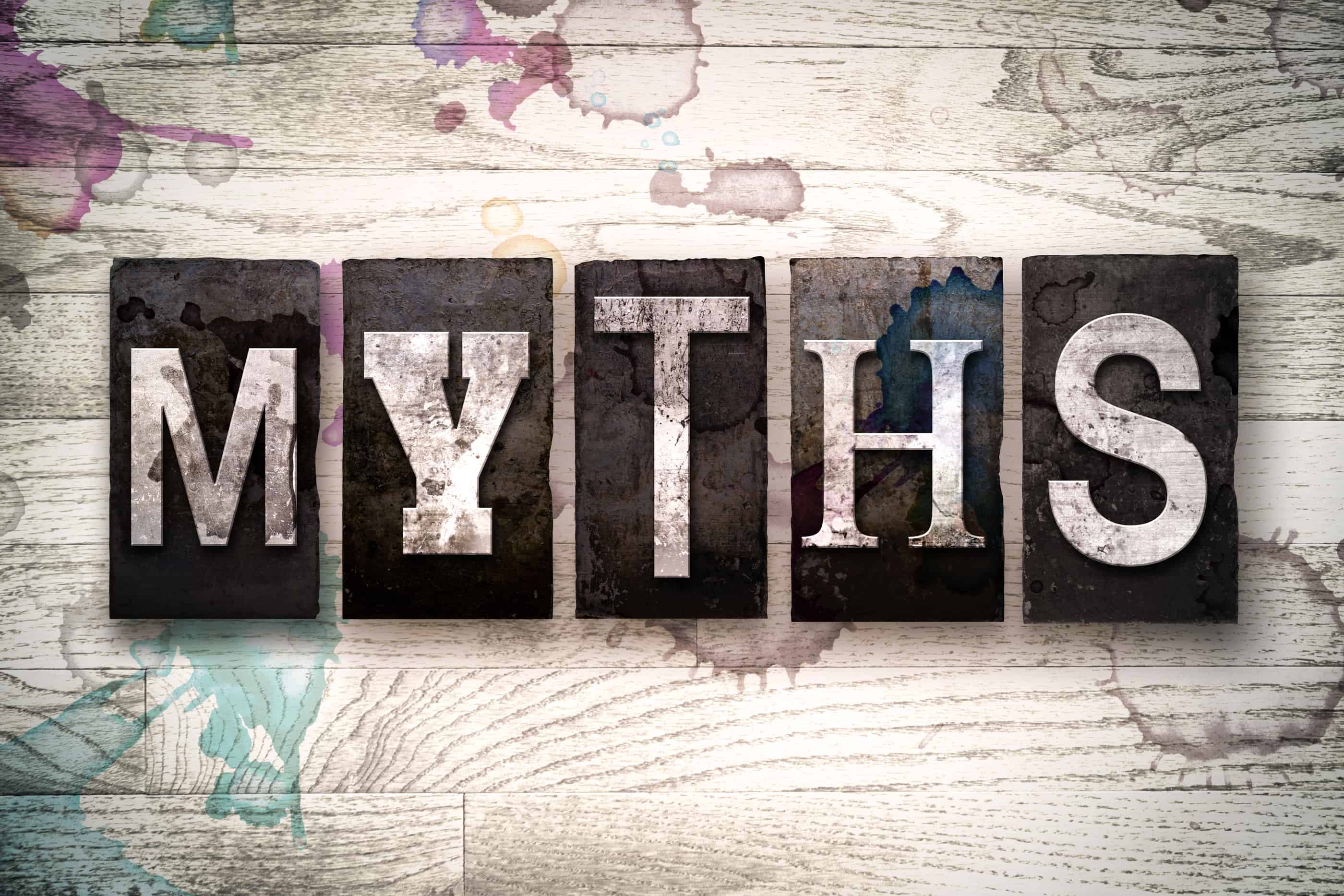

Be First to Comment